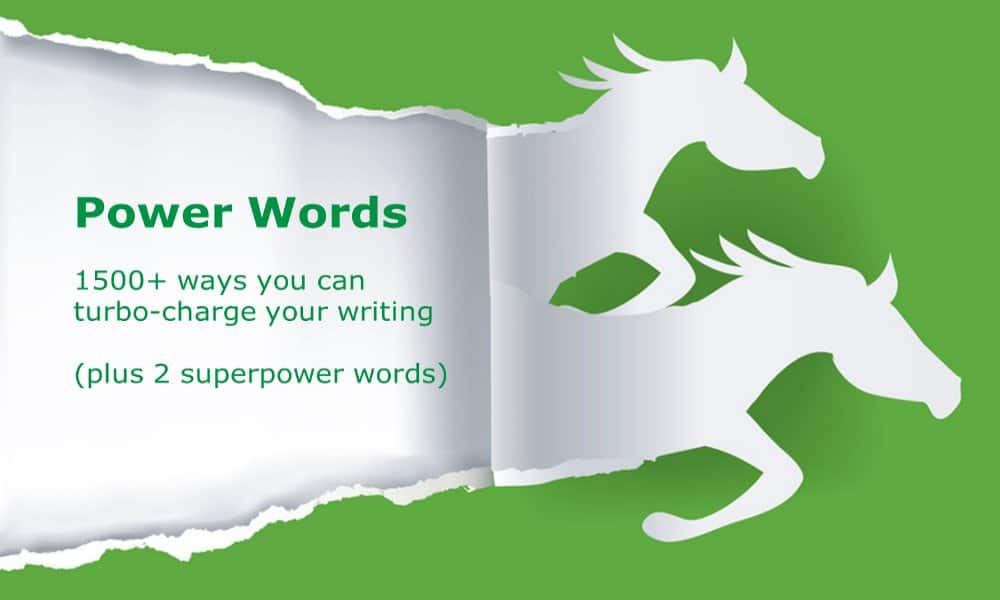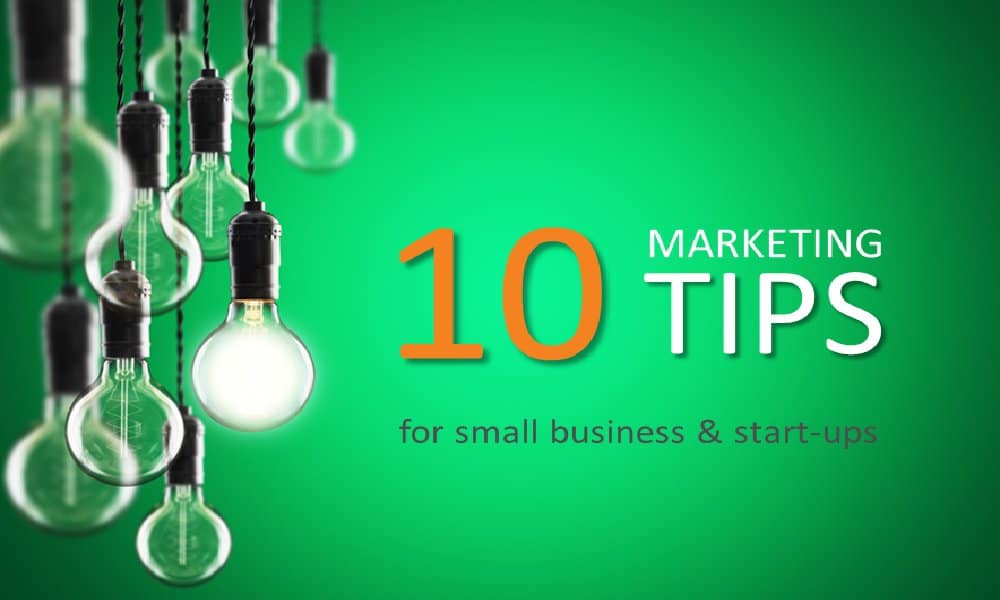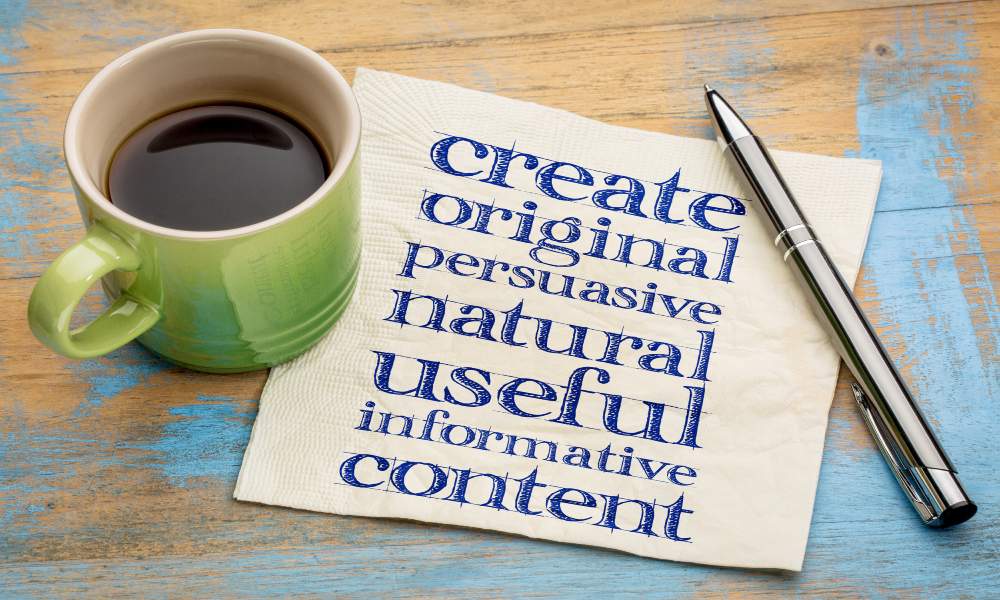What are they?
You can’t get very far in marketing or copywriting without hearing about power words, and everyone has their own power words list. But what are power words?
Simply, they’re words that have the power to create a reaction and a response. To engage people who are reading your content.
Many of them are emotional! So they generate some kind of emotional response within the people that are reading. This could be:
 Greed
Greed- Lust
- Fear
- Shock
- Curiosity
Curiosity is one of the most common. Why?
Because most people are just not that interested in what you’re saying. They have other priorities. But you want them to engage. Ask questions, give you more of their time and attention. So you need to convince them it’s worth doing that.
Where do you use them?
Power words are useful absolutely everywhere in your writing. Let’s look at some places that they’re particularly beneficial.
Headlines and subject lines
Sprinkle power words into the title of a blog post, a campaign headline, or the subject line of your email.
But be careful.
Too many power words can turn your copy into clickbait. Using power words to draw your readers in is fine, but you need to fulfil on your promise. Otherwise, you’r just clickbait – and clickbait doesn’t get you too many serious enquiries.
Your first and foremost goal is to get people to pay attention and read on. Use one or two power words to do that, then make sure you say something worth their attention afterwards.
Don’t forget, people skim read – especially on the web. So even once they’re reading, you need to keep drawing them in. Use power words where they’ll be visible. In subheadings and bullet points, for example.
Calls to action
A call to action is where you want somebody to do something.
Buttons
Buttons are by far the most common place for calls to action. And if you’re reading this, you probably already know that ‘click here‘ is not great copy to put on a button.
‘Find out more‘ or ‘read more’ are a bit better. ‘More‘ is a power word, after all. But they could be even better.
Remember I said people skim-read? If they’ve just glanced at the button, how do they know what they can get ‘more‘ of? Let’s ramp the call to action up further. I’ve used bold to highlight words from my comprehensive power words list
in these examples: Subscribe for more secret marketing tips Get the insider guide to wealth through property Alternatively, if you want less copy on the button itself, use power words in a call to action right next to it. And use colours and border sto link everything visually. 
Links
Some links, although not all of them, are also calls to action. For example, imagine I’m writing a blog post about understanding your target market. I include a link to this article which explains what a target market is. I also include a link to my page offering marketing strategy services. Which one do I want you to click on? Clearly, the one which goes to my service page. So I use some power words (inbold again) in and around that link I want you to focus on: Understanding your target market is one of the critical elements of a successful marketing strategy. Notice how ‘successful‘ is part of the link. It just adds a little more promise about the next page.
My top two power words
There are 1638 words in my personal power words list ( download it now and write effective copy easily
), but there are two power words that I’d like to talk about particularly.
Before I do, take a look at this video. It’s about an advertising slogan which uses both these power words.
You
When I was starting out in my career, a wise and wily marketer gave me my first list of power words. There were only twenty words. Two of them were ‘you’. I thought she’d slipped up and pointed this out to her.
‘No,‘ she said. ‘It’s on the list twice because it’s at least twice as powerful as any other word. And when your marketing uses ‘you’, it means you focus on your customer.‘
Here’s a quick, simple and eye-opening test you can use on every piece of copy you’ve got. I suggest you start with the homepage of your website. How often does it say ‘I‘ or ‘we‘? How often does it say ‘you‘? Where’s the focus?
Because
The other word I want to talk about is ‘because.’
Social psychologist Ellen Langer tested what would make people more willing to let her queue jump in the queue for the photocopier. She and her team used three different wordings of the request.
‘Excuse me, I have 5 pages. May I use the xerox machine?’ (60% let her queue jump.)
‘Excuse me, I have 5 pages. May I use the xerox machine, because I have to make copies?’ (93% let her queue jump.)
‘Excuse me, I have 5 pages. May I use the xerox machine, because I’m in a rush?’ (94% let her queue jump.)
When you think about it, it’s crazy. She explains that she needs to make copies, which everyone already knows, since she’s in a queue to make copies. Yet explaining something they already know means half as many people again will let her go ahead. Huh?
Why does ‘because’ work? I’m not a psychologist, but my guess is it makes you sound as if you’ve thought things through. It justifies the decision to go with what you want, because you’ve done all the hard work to confirm it’s the right thing already.
So:
- Why should you download my power word lists
Instead of anyone else’s?
Because it’s bigger and more complete. I’ve compiled all the words from the top ten lists already. Because it’s simpler and quicker to get them all here in one place rather than repeat the task yourself. And because if you just take one of the other lists, you might miss out on the perfect power word for your next piece.






